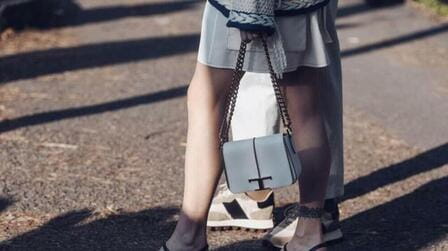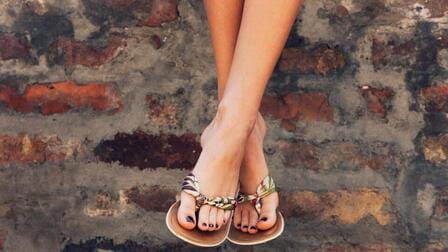When it comes to choosing the best sandal material, there are a few key factors to consider. The right material can make a huge difference in comfort, durability, and style. Here's an in-depth look at the most popular sandal materials to help you decide which is best for your needs.
Leather
Leather is a timeless sandal material that offers an unbeatable mix of comfort, durability, and style. Full-grain leather in particular is naturally soft and forms to your foot over time. It's also rugged enough to hold up well to regular wear.
Some key benefits of leather sandals:
- They contour to your feet for customized comfort and support
- The material breathes well, keeping your feet cool in warm weather
- Leather sandals tend to last for many seasons with proper care
- Leather offers a sophisticated look that works for both casual and dressy settings
- A range of leather finishes like metallic, patent, or embossed add stylish flair
High quality full-grain or Nubuck leathers make the most durable and comfortable leather sandal options. Just keep in mind leather can be prone to stretching out over time. Getting an adjustable strap sandal can help maintain a snug fit.
Rubber
For a casual, sporty sandal, rubber is an excellent choice. Rubber soles offer plenty of grip and traction. The material is also waterproof and flexible. Brands like Teva and Chaco are known for their rugged and supportive rubber sport sandals.
Here's why rubber excels as a sandal material:
- Provides cushioning and shock absorption for comfortable all-day wear
- Rubber soles grip well to wet and dry surfaces, preventing slips
- Won't absorb water, making them perfect for beach and water wear
- Flexible and conforms to the contours of your feet
- Durable and resistant to wear and abrasion
- Lightweight design makes them easy to pack for travel
- Wide range of casual styling options like flips flops, slides, and straps
The main downside of rubber is that it lacks the sophisticated look and feel of leather. But for pure comfort and utility, it's hard to beat.
Cork
Looking for a sustainably-sourced sandal material? Cork is a smart choice. Harvested from the bark of cork oak trees, the material is completely natural and biodegradable. It also has some great properties for footwear.
Why cork makes an eco-friendly sandal material:
- Renewable and harvested without harming trees
- Naturally moisture-wicking and antimicrobial
- Lightweight and supportive with cushioning properties
- Conforms to foot shape for customized comfort
- Durable and long-lasting if cared for properly
- Available in a wide range of earthy, neutral colors
- Pairs well with casual styles like flips flops and slingbacks
Cork has gained popularity from brands like Keen and SOLE. The material molds comfortably to your feet. Just keep in mind that cork lacks the structure and support of firmer materials like leather. But overall, it's a smart choice for laidback sandal styles.
Fabric & Synthetics
Fabric straps and synthetics like vinyl and plastic are also common in affordable, casual sandal styles. These materials make sense for sandals you plan to wear in wet environments or want at a lower price point.
Some pros of fabric and synthetic sandal materials:
- Lightweight and quick-drying properties work well for water
- Fabric straps offer flexibility and softness against bare skin
- Vinyl and plastic materials are waterproof and easy to clean
- Inexpensive cost makes them ideal for kids' sandals or as pool shoes
- Fabric allows for a wide range of colorful prints and patterns
However, fabric and synthetics lack durability compared to leather and rubber. They are also prone to irritation, odor, and debris getting trapped in the material. So they work best as secondary vacation or pool sandals rather than your primary pair.
Conclusion
When choosing the best sandal material for your needs, consider your lifestyle and priorities. Leather is best for all-around durability, comfort, and style. Rubber makes excellent rugged sports sandals. Cork offers a sustainably-sourced natural option. And affordable fabric and synthetic materials work well as secondary sandals for water or outdoor activities.
The right sandal material can make all the difference in how your sandals look, feel, and perform. Consider what features matter most to you like durability, breathability, support, traction, and style. By choosing a material that aligns with your needs and preferences, you're sure to get the perfect pair of sandals you'll love wearing for seasons to come.












